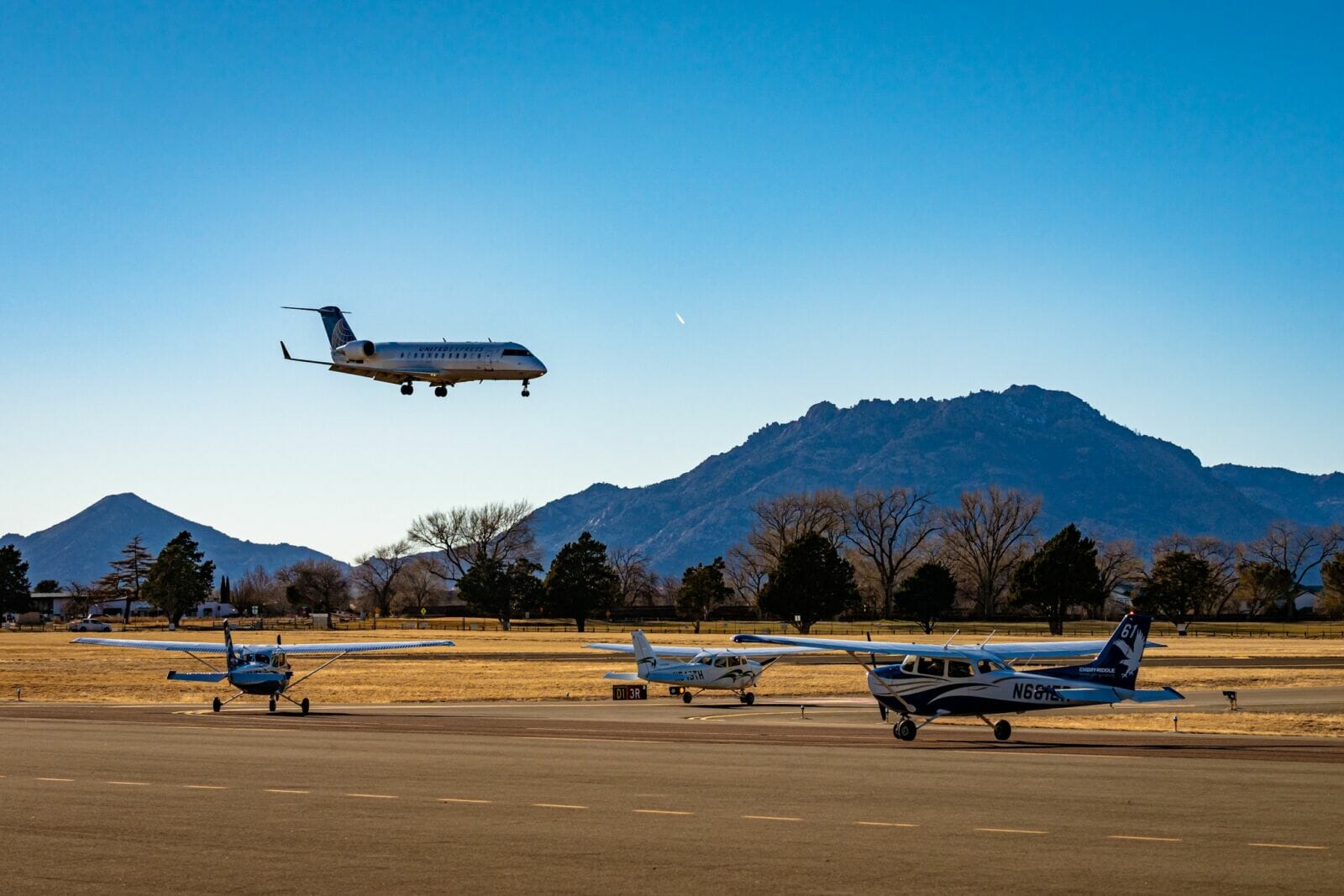PRESCOTT — As Prescott City Council members see it, the Prescott Regional Airport and Embry-Riddle Aeronautical University are critical links in filling the needs in an ongoing worldwide pilot shortage.
During recent discussions about updating the Airport Layout Plan, council members expressed their support for the extensive improvements, past and future, at the airport.
The updated plan was approved 6-0 by the council as several council members mentioned the importance of Prescott’s place in training pilots for the future, The Daily Courier reported.
READ ALSO: Sold-out crowd celebrates winners of 2022 RED Awards
Airport Director Robin Sobotta said that the pilot shortage has had significant impacts on the industry in recent years, and she said that shortage is expected to continue for the next two decades.
“In the United States, it’s somewhere between 150,000 and 200,000 projected over the next 20 years,” Sobotta said of the ongoing shortage. “Globally, it’s over 600,000 that we’re going to be short.”
Mayor Phil Goode responded, “I think it’s very easy to conclude that the pilot training at Embry-Riddle is such an essential component to national aviation planning and that being able to support Embry-Riddle aviation training is really critical for Sky West Airlines being able to have kind of a connection to those training graduates.”
Other council members also voiced support for improvements to the airport. “It’s important that we deliver the message that the airport has this council’s support 100%,” Mayor Pro Tem Cathey Rusing said.
As a result of the ongoing pilot shortage, flight training has been on an upward trajectory in recent years, which has led to a dramatic rise in the number of operations at the Prescott Regional Airport.
One of the main impacts is the in the number of airport operations, which came in at just over 311,000 in 2021. “To give you a comparison, in calendar year 2020, we were at 235,000 operations,” Sobotta said.
Still, she noted that 2021’s numbers were not record-setting at the Prescott Regional Airport. “Back in calendar year 1997, we actually did reach an all-time high of 353,000 operations,” she said. “So, while we have seen recent increases, it isn’t to the level we hit in the 1990s. However, I do anticipate we will eventually go back to those levels.”
Sobotta attributed the drop in flight operations after the 1990s to cyclical changes in the industry, although she said the current increases are expected to continue.
Parker Northrup, the chair of Embry-Riddle’s Flight Department in the College of Aviation, said the university has experienced dramatic increases in flight-student numbers in the past three years, with even more growth anticipated in the coming three to five years.
Currently, Northrup said Embry-Riddle has just over 800 flight students, which represents more than 100% growth in three years.
And with the university’s planned expansion at the Strategic Academic Flight Education project, Northrup said, Embry-Riddle will be able to accommodate even more growth.
“(The SAFE project) is going to provide us the ability to expand within the airport property line and provide for approximately 1,000 to 1,100 students,” Northrup said. “We expect market demand to cap us out at about 1,200 over the next three to five years.”
Likewise, Northrup said, the university’s fleet is also up significantly. “We had 23 airplanes three years ago; we have 75 in the fleet today,” he said.
For 2022, Sobotta said, Prescott is on track to be the busiest collegiate flight training base in the country.
“Three years ago, we were the third-busiest collegiate flight training base in the country,” she said. “We eclipsed (Embry-Riddle’s) Daytona Beach last year and became the second-busiest. This year, we’re eclipsing UND (University of North Dakota). By the end of this year, we are the busiest collegiate flight-training base in the country.”
Plenty of improvements have already been made at the airport in the past several years, and more are coming, according to the updated Airport Layout Plan.
Charlie McDermott, a consultant with the Dibble engineering firm, noted that the existing Airport Layout Plan was approved by the city in 2019.
“As you know, a lot has happened at the airport since 2019,” McDermott said. “Nearly $40 million of improvements have been made at the airport in that timeframe, which is significant for any airport, and certainly for Prescott, it is significant.”
With the changes, McDermott said an update was needed on the Airport Layout Plan. “Through time, things change, operations at the airport change, tenants change, and needs change, so it’s important that we keep that Airport Layout Plan updated so it reflects what your future needs are,” he said.
Among the major recent improvements at the airport was the new passenger terminal, as well as the ongoing improvements to the taxiway Charlie, the main parallel taxiway north of the main commercial service runway.
The taxiway has been relocated 75 feet (23 meters) away for safety or standards reason, Sobotta said, noting that phase 1 of the projects has been completed, phase 2 is underway, and phase 3 is about to be bid.
A major upcoming project involves an extension of the main runway to about 10,000 feet, which is needed, in part, to deal with Prescott’s challenges with high elevation and hot summer temperatures.
“We’re considered a ‘hot and high’ airport, so we need a longer runway to be able to fill all the seats on the plane,” Sobotta said. “We have run into weight restrictions. When it’s late in the day when it’s warm in the summer, we have lost the ability to sell 25 seats on a 50-seat airplane. That happened for several months over the summer.”
In addition to the benefit to commercial flights, Sobotta said, “There are some other benefits to the runway extension study and that is that the U.S. Forest Service will be able to take advantage of the additional runway length to be able to have additional fuel or extinguishing agent on board the aircraft.”




